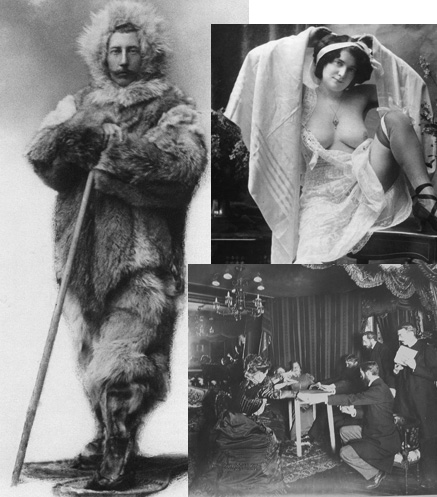Robert Anthony Siegel’s Visual Muses
I went to see Robert Anthony Siegel read from his latest novel, All Will Be Revealed, about a month or so ago at a furniture gallery in SoHo, where he set up a slide projector and interspersed his excerpts with illustrated mini-lectures about some of the book’s themes. And that’s when I knew I wanted him to talk about his creative process for Beatrice. You can also read a new short story from Siegel this week on the Five Chapters website, which if you haven’t discovered it yet is pretty nifty.
My first novel, All the Money in the World, was set in the world of my youth: New York in the 1970s. For my second book, the novel that eventually became All Will Be Revealed, I wanted to go in the opposite direction and explore a world I didn’t know firsthand, a world I would have to make my own through an act of imagination. What I decided to do was go back in time to the close of the so-called Gilded Age, at the end of the nineteenth century. The period had always fascinated me because it seemed like the birthplace of our own strange contemporary scene: obsessed with celebrity and spectacle, in love with illusion, unsure where fantasy ends and reality begins.
In 1896, the year in which my protagonist, Augustus Auerbach, guides his wheelchair into the parlor of the spirit medium Verena Swann, lower Broadway was lined with “museums” in which one could view a whale kept in a tank of water (slowly starving to death—they didn’t know what to feed it), throw bits of meat to a supposedly man-eating plant, or play chess against an automaton (with a boy or a dwarf hidden inside). If you got tired of the life-size diorama of the battle of Gettysburg, you could step into a spirit photographer’s studio and get your picture taken with a dead relative: the ghost would appear, nearly transparent, in the background.
What I saw in all this was the first stirrings of our own “virtual” world, a world in which imitations of life—TV shows, movies, and images on the Internet—threaten to become more real to us than life itself. Going back to the Gilded Age thus offered me a chance to think about my own creeping sense of unreality, but with the perspective that a hundred years’ distance can provide.
I found my characters relatively quickly. Augustus Auerbach is a photographer who has made a fortune selling pornography through the mail. Crippled since childhood, he is confined to a wheelchair and hides his legs beneath a blanket; it is only by making photographs that he feels alive. Verena Swann is a spirit medium, someone who channels the voices of lost loved ones for their grieving relatives. Drained by the spectacle of her clients’ sorrow, she has come to question the reality of her powers. Her spirit control—the spirit who connects her with other spirits Beyond the Veil—is her dead husband, Captain Theodore Swann, an explorer who died trying to reach the North Pole. He believes that he is real, even though he cannot exist without Verena to give him voice.
Even with my characters in place, I had a great deal of research to do. I read a lot about the period, and a lot from the period—novels, journal, letters—but what most powerfully affected me were the old photographs that I found: images of naked women sprawled on beds, surrounded by the bric-a-brac of Victorian decor; pictures of Spiritualists gathered around séance tables, gripping hands as if an invisible force were trying to pull them apart; studio portraits of men and women staring gravely into the camera, their dead loved ones hovering in the air behind them. The people in these photographs appeared so alive, so full of sorrow, wonder and yearning that it was hard to remember that they were in fact dead, and that what I was looking at was not them, their reality, but simply the barest trace of their existence, the imprint of their light.
The complicated feelings I got from those old photographs soon began shaping the development of the novel. Augustus Auerbach, the reclusive pornographer, wondered what his models did with themselves after they put on their clothes and left the studio. Verena Swann, the reluctant medium, overcame her distaste for her clients long enough to pay a call on Auerbach. In fact, I think it was at that very moment, with Auerbach guiding Verena through his Fifth Avenue mansion—through rooms he himself had never bothered to visit before—that All Will Be Revealed gained the willful, contradictory energy a novel must have in order to live. From that point on, I just had to follow behind and listen.
4 June 2007 | guest authors |


 Our Endless and Proper Work is my new book with Belt Publishing about starting (and sticking to) a productive writing practice.
Our Endless and Proper Work is my new book with Belt Publishing about starting (and sticking to) a productive writing practice. 
